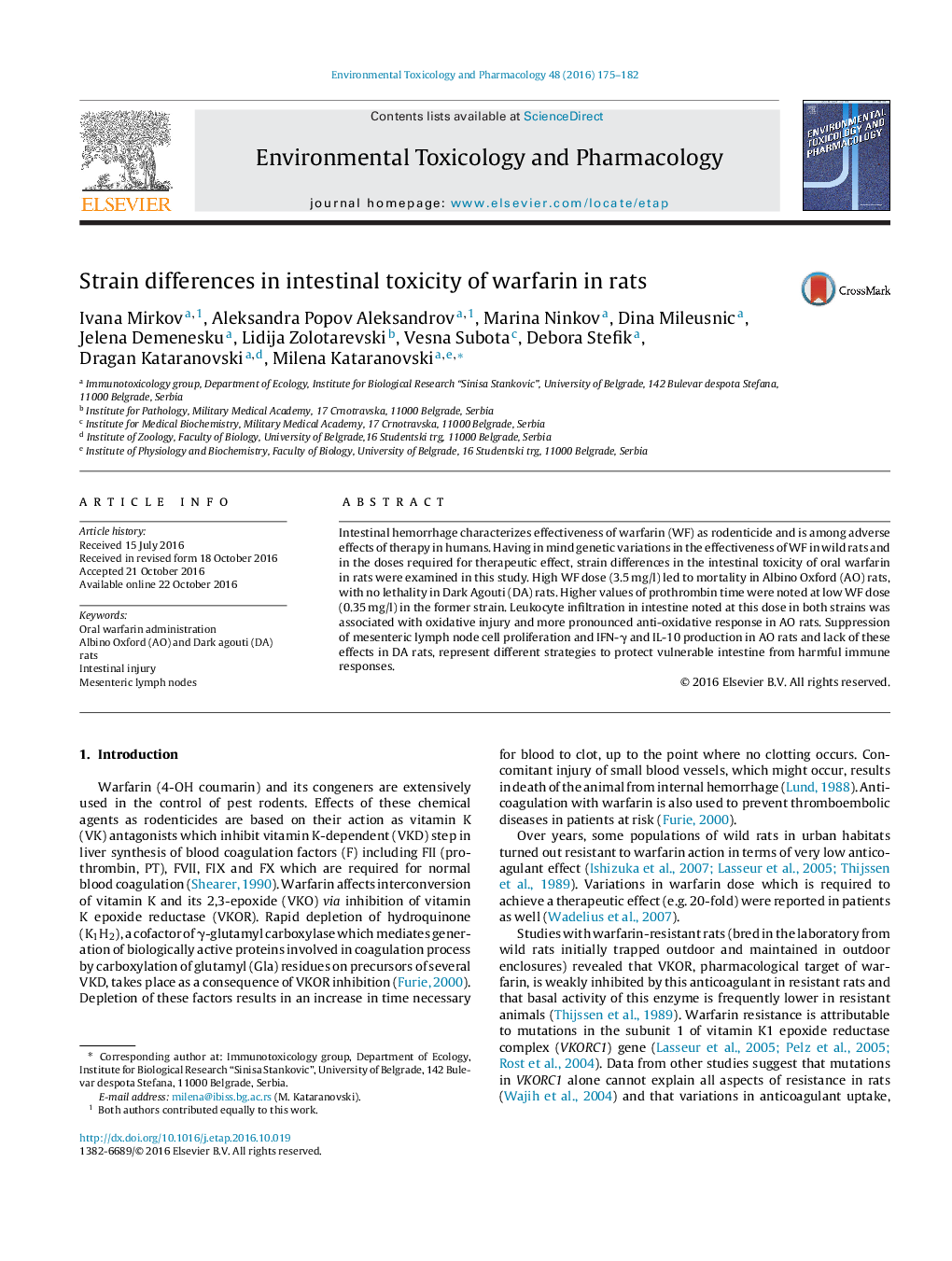| Article ID | Journal | Published Year | Pages | File Type |
|---|---|---|---|---|
| 5559909 | Environmental Toxicology and Pharmacology | 2016 | 8 Pages |
â¢Intestinal toxicity of oral warfarin was examined comparatively in AO and DA rats.â¢High warfarin (WF) dose (3.5 mg/l) resulted in lethality in more than 80% of AO rats.â¢Higher values of prothrombin time were noted at low WF dose (0.35 mg/l) in AO rats.â¢Intestinal oxidative injury by low WF was noted in AO rats.â¢Suppression of mesenteric lymph node cell activity was noted only in AO rats.
Intestinal hemorrhage characterizes effectiveness of warfarin (WF) as rodenticide and is among adverse effects of therapy in humans. Having in mind genetic variations in the effectiveness of WF in wild rats and in the doses required for therapeutic effect, strain differences in the intestinal toxicity of oral warfarin in rats were examined in this study. High WF dose (3.5 mg/l) led to mortality in Albino Oxford (AO) rats, with no lethality in Dark Agouti (DA) rats. Higher values of prothrombin time were noted at low WF dose (0.35 mg/l) in the former strain. Leukocyte infiltration in intestine noted at this dose in both strains was associated with oxidative injury and more pronounced anti-oxidative response in AO rats. Suppression of mesenteric lymph node cell proliferation and IFN-γ and IL-10 production in AO rats and lack of these effects in DA rats, represent different strategies to protect vulnerable intestine from harmful immune responses.
